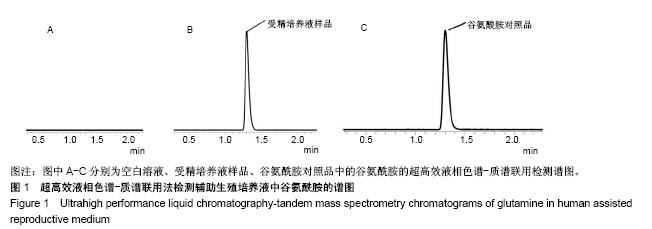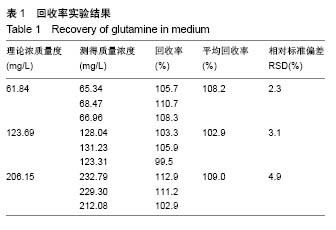| [1] Quinn P.The development and impact of culture media for assisted reproductive technologies. Fertil Steril. 2004;81(1): 27-29.[2] Petra L,Gardner DK.The effects of chemical and physical factors on mammalian embryo culture and their importance for the practice of assisted human reproduction. Hum Reprod Update. 2016;22(1):2-22.[3] 王增艳,何方方,孙正怡,等.冷冻环玻璃化法冷冻小鼠卵母细胞的效果评价[J].生殖医学杂志,2008,17(1):38-42.[4] 李宗武,朱传金,刘庆勇.人血浆及精浆中钙、镁、锌、铜对精液成分的影响[J].国外医学(医学地理分册), 2004,25(3):124-126.[5] Morbeck DE,Krisher RL,Herrick JR,et al. Composition of commercial media used for human embryo culture.Fertil Steril. 2014;102(3):759-766.[6] Gardner DK,Vella P,Lane M,et al.Culture and transfer of human blastocysts increases implantation rates and reduces the need for multiple embryo transfers.Fertil Steril. 1998; 69(1):84-88.[7] Dumoulin JC,Land JA,Van Montfoort AP,et al.Effect of in vitro culture of human embryos on birthweight of newborns.Hum Reprod.2010;25:605-612.[8] Nelissen EC,Van Montfoort AP,Coonen E,et al. Further evidence that culture media affect perinatal outcome: findings after transfer of fresh and cryopreserved embryos.Hum Reprod.2012;27(7):1966-1976.[9] 赵杰,陈秀娟,范文斌.鼠胚在人类辅助生殖培养环境质量控制的作用研究[J].内蒙古医学院学报,2009,31(1):49-51.[10] 《人类体外辅助生殖技术用液注册技术审查指导原则》http://cnda.cfda.gov.cn/WS04/CL2050/227857.html [11] EUROPEAN COMMISSION, Guidelines for conformity assessment of In Vitro Fertilisation (IVF) and Assisted Reproduction Technologies (ART) products.[2012-01-01] http: //ec.europa.eu/docsroom/documents/10340/ attachments/1/.../pdf[12] Gardner DK,Lane M.Amino acid and ammonium regulate mouse embryo development in culture.Biol Reprod. 1993(48): 377-385.[13] Gardner DK,Hamilton R,McCallie B,et al.Human and mouse embryonic development, metabolism and gene expression are altered by an ammonium gradient in vitro.Reproduction. 2013;146:49-61.[14] Hashimoto S,Nishihara T,Murata Y,et al.Medium without ammonium accumulation supports the developmental competence of human embryos.J Reprod Dev. 2008; 54: 370-374.[15] 刘婷婷,邢青斌,程佳丽,等.桦褐孔菌氨基酸含量测定方法的建立[J].营养学报,2017,39(5):504-506.[16] 陈思,郜玉钢,臧埔,等.鹿角脱盘及其5种提取部位21种氨基酸含量对比分析[J].药物分析杂志,2017, 37(10):1851-1856.[17] 唐翎,魏伟,赵勇.UPLC-MS/MS法测定猴头菌丝体中18种游离氨基酸的含量[J].药物分析杂志, 2018,38(1):112-117.[18] Le A,Ng A,Kwan T,et al. A rapid, sensitive method for quantitative analysis of underivatized amino acids by liquid chromatography-tandem mass spectrometry (LC-MS/MS).J Chromatogr B Analyt Technol Biomed Life Sci. 2014;944: 166-174.[19] Roucher VF,Desnots E,Naël C,et al. Use of UPLC-ESI-MS/MS to quantitate free amino acid concentrations in micro-samples of mammalian milk. Springerplus.2013;2:622.[20] 李泰锋,薛薇,李敏,等.LC-MS/MS法测定大鼠脑透析液中6种氨基酸含量的方法学建立[J].中国新药杂志, 2015,24(14): 1659-1664.[21] Zhai XJ,Chen F,Zhu CR,et al.A simple LC-MS/MS method for quantitative analysis of underivatized neurotransmitters in rats urine: assay development, validation and application in the CUMS rat model.Biomed Chromatogr. 2015;29(11): 1737-1743.[22] 赵芳,李强,梁梅丽.超高效液相色谱-串联质谱法快速测定大鼠血清中8种神经递质[J].分析化学,2018, 1(1):121-128.[23] Kleijkers SH,van Montfoort AP,Bekers O,et al. Ammonium accumulation in commercially available embryo culture media and protein supplements during storage at 2-8 °C and during incubation at 37 °C. Hum Reprod. 2016; 6(31):1192-1199. |
.jpg)


.jpg)